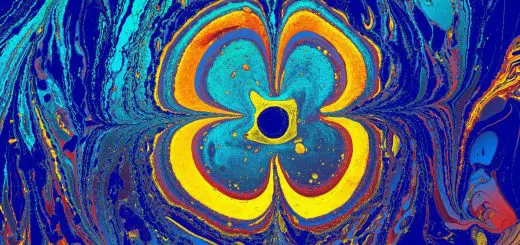The Story of Hades and the Underworld in Greek Myth

Looking for more amazing products? Check out our online store and explore our collection here! Happy shopping!
Before diving in, please note: This post is for informational purposes only. If you’d like to know more about how we approach topics, feel free to check out our friendly Disclaimer Page.
Hey there, amazing readers! 
We’re committed to delivering quality posts, and your support (even just sticking around despite the ads) means everything to us. So, bear with us, and thanks for helping us keep the good vibes rolling. Now, on to the fun stuff!
TRANSLATE BUTTON AT THE END OF THE ARTICLE
A Quick Overview
When we think of Hades and the Underworld, images of darkness and despair often come to mind.
However, Greek mythology presents a far more nuanced view.
This article will take you on a delightful journey through the intricate tales of Hades, the god of the Underworld, and his domain.
Together, we will explore the origins of Hades, understand the Underworld’s structure, meet its inhabitants, and appreciate the myths that make this realm more fascinating than frightful.
Introduction: A Glimpse into Hades and the Underworld
Hades, the god of the Underworld, is often misunderstood.
Many view him as a villain, ruling over a gloomy and terrifying world.
But there’s so much more to his story!
Hades embodies the cycle of life and death, serving a crucial role in maintaining balance in the universe.
The Underworld is not just a place for the dead; it is a complex and structured world filled with diverse realms, entities, and narratives.
The tales surrounding Hades and the Underworld invite us to reflect on life, love, and mortality.
So, let’s dig deeper into this captivating narrative!
The Origins of Hades: Birth of the God of the Dead
Hades was born to the Titans Cronus and Rhea, along with his siblings Zeus and Poseidon.
According to mythology, Cronus swallowed his children to prevent them from overthrowing him.
However, Rhea saved Hades by hiding him away and gave Cronus a stone wrapped in swaddling clothes instead.
When Hades and his siblings finally rose up against their father with the help of the Olympian gods, they defeated the Titans.
As a reward for their victory, they divided the universe among themselves: Zeus ruled the sky, Poseidon took the oceans, and Hades received the Underworld.
His selection was significant, as it indicated the importance of the afterlife in Greek culture.
Hades did not choose his domain out of malice; rather, he took on the responsibility of managing the afterlife, ensuring that all souls received their due.
Understanding the Underworld: Not Just a Dark Place
Often called a gloomy place, the Underworld is much more than that!
It consists of various regions, each serving a distinct purpose.
Here’s a snapshot of its features:
The Asphodel Meadows: A neutral realm where the souls of ordinary people wander.
The Elysian Fields: A paradise for heroes and the virtuous, where they enjoy eternal bliss.
Tartarus: A pit of torment for the wicked, it’s where the most infamous criminals face their punishment.
Understanding these regions provides insight into how the ancient Greeks perceived death and the afterlife.
Rather than an endless void, the Underworld reflects the belief in a just afterlife, where one’s actions during life determined their fate beyond the grave.
The Twelve Rivers of the Underworld: A Splash of Myth
Imagine rivers that weave through the Underworld, each with its own story and significance!
According to myth, the Underworld is bordered by five primary rivers, but many sources mention twelve.
Here are the most notable ones:
Styx: The river of hatred, where souls cross to reach the Underworld.
Acheron: Known as the river of woe, it represents the pain of those who have passed.
Lethe: The river of forgetfulness, where souls drink to forget their earthly lives.
Phlegethon: The river of fire, leading to the fiery realms of punishment.
Cocytus: The river of lamentation, echoing the cries of the damned.
These rivers not only provide a physical landscape but also symbolize emotional states and experiences associated with death and the afterlife.
They remind us of the blend of light and darkness that life and death represent.
Charon the Ferryman: A Ticket to the Afterlife
No journey across the rivers of the Underworld would be complete without mentioning Charon, the ferryman.
Charon plays an essential role in Hades’ realm, helping souls transition from the world of the living to the land of the dead.
What’s his deal?
Here are some key points:
Charon only ferries souls who can pay him, often with an obol, a small coin placed in the deceased’s mouth for the journey.
If a soul cannot pay, they wander the shores of the Styx for eternity, unable to enter the Underworld.
He is depicted as a grumpy old man, often characterized by his bony figure and stern demeanor.
Charon’s role emphasizes the importance of respect for the dead and the concept of payment in the afterlife.
It also highlights the idea that transitioning to the afterlife is serious business!
The Three Judges: Deciding Fates Beyond the Grave
Once souls arrive in the Underworld, they must face the judgment of three key figures: Minos, Rhadamanthus, and Aeacus.
Each judge has unique responsibilities, ensuring that everyone’s fate is fair and just.
Minos: Often depicted with a scepter, he is the chief judge and decides where a soul should go.
His verdict is final.
Rhadamanthus: Known for his strict morals, he judges the souls of those who lived justly on Earth, rewarding them or sending them to punishment.
Aeacus: Originally a mortal king, he oversees the souls of those from Europe, making sure they receive their due.
These judges play a critical role in shaping the narrative of the Underworld, reminding us that our actions in life have consequences.
The judgments they render emphasize morality and justice, reinforcing the ethical dimensions of the myths.
Persephone’s Tale: Love in the Land of Shadows
Perhaps the most famous story involving Hades is that of his wife, Persephone.
The tale of their love is both beautiful and a bit tragic.
Hades fell in love with Persephone, the daughter of Demeter, the goddess of the harvest.
In a classic tale of abduction, Hades took Persephone to the Underworld, which upset her mother deeply.
Demeter’s grief resulted in barren earth, leading to winter.
To resolve the situation, Zeus intervened, allowing Persephone to spend half the year with Hades and the other half with her mother.
This cyclical journey represents the changing seasons and the cycle of life and death.
It teaches us that love can be found even in the most unexpected places, and that partnership can blossom in the shadows.
Cerberus: The Friendly Guardian of the Underworld
Meet Cerberus, the three-headed dog!
This fluffy guardian stands at the gates of the Underworld, ensuring that the souls enter but do not escape.
Cerberus is often depicted with a serpent tail, and he’s known for his loyalty to Hades.
While he has a fearsome reputation, some myths suggest he can also be friendly and playful, especially towards those who approach with respect.
Cerberus’ role symbolizes the boundary between life and death, and his presence reassures us that the dead are safely kept in their eternal resting place.
Cerberus reminds us that even in death, companionship exists.
He’s a unique figure—part fearsome guardian, part gentle creature, embodying the duality of Hades’ domain.
The Elysian Fields: A Paradise for the Worthy
Not all souls face punishment in the Underworld!
The Elysian Fields offer a stunning contrast.
This paradise, reserved for heroes and the virtuous, is depicted as a lush, beautiful landscape.
In the Elysian Fields, souls enjoy eternal bliss, engaging in leisure activities and reliving their greatest moments from life.
They are free from pain and sorrow, basking in the eternal sunlight.
This place is often seen as a reward for lives of valor, courage, and kindness.
The Elysian Fields highlight the Greek belief in a just afterlife, where good deeds are rewarded and virtues are celebrated.
It’s a beautiful thought—no matter how dark life may seem, there’s a possibility of peace and happiness in the afterlife.
The Role of Hades in Other Greek Myths
Hades appears in various other myths, often representing themes of power, death, and morality.
His interactions with other gods and mortals frequently shape their fates.
For example:
Heracles: In his quest to capture Cerberus, Heracles descends into the Underworld, showcasing the bravery required to confront death.
Orpheus and Eurydice: This poignant tale of love and loss emphasizes the power of love to overcome even the finality of death.
Hades allows Orpheus to retrieve Eurydice, but only if he does not look back—a testament to the tragic nature of their story.
These myths not only enrich the narrative of Hades but also serve to convey lessons about human emotions, struggles, and the inevitable nature of death.
They remind us that stories can bridge the gap between life and the afterlife.
The Symbolism of Hades: Life, Death, and Beyond
Hades, as a figure, goes beyond just being the god of the Underworld.
He symbolizes several profound concepts:
Mortality: Hades teaches us to reflect on our lives and the impact of our actions.
Balance: By ruling the Underworld, Hades maintains the balance between life and death, reminding us that both are integral parts of existence.
Hope: The narratives surrounding Hades often contain threads of hope, suggesting that even in darkness, there’s light to be found—whether in the love of Persephone, the beauty of the Elysian Fields, or the stories of redemption.
Through Hades, we can explore our own feelings about death and legacy.
The myths serve as a mirror, reflecting our desires, fears, and hopes.
Conclusion: Embracing the Myths of Hades and His Realm
The story of Hades and the Underworld offers a fascinating glimpse into ancient Greek beliefs about life, death, and everything in between.
Rather than being a figure to fear, Hades embodies the complexities of existence, teaching us valuable lessons about morality, love, and the natural cycles of life.
As we journey through these myths, we uncover deeper meanings that resonate with our own lives.
The tales of Hades encourage us to embrace both light and shadow, reminding us that in every ending, there’s the promise of new beginnings.
So, next time you think of Hades, remember: he’s much more than just the god of the dead; he’s a storyteller, a guardian, and a reminder of the rich tapestry of life itself.

The Enlightenment Journey is a remarkable collection of writings authored by a distinguished group of experts in the fields of spirituality, new age, and esoteric knowledge.
This anthology features a diverse assembly of well-experienced authors who bring their profound insights and credible perspectives to the forefront.
Each contributor possesses a wealth of knowledge and wisdom, making them authorities in their respective domains.
Together, they offer readers a transformative journey into the realms of spiritual growth, self-discovery, and esoteric enlightenment.
The Enlightenment Journey is a testament to the collective expertise of these luminaries, providing readers with a rich tapestry of ideas and information to illuminate their spiritual path.
Our Diverse Expertise
While our primary focus is on spirituality and esotericism, we are equally passionate about exploring a wide range of other topics and niches 

To ensure we provide the most accurate and valuable insights, we collaborate with trusted experts in their respective domains 
Our blog originally focused on spirituality and metaphysics, but we’ve since expanded to cover a wide range of niches. Don’t worry—we continue to publish a lot of articles on spirituality! Frequently visit our blog to explore our diverse content and stay tuned for more insightful reads.
Hey there, amazing reader! 
Check out our store here and take a peek at some of our featured products below! Thanks for being awesome!
















